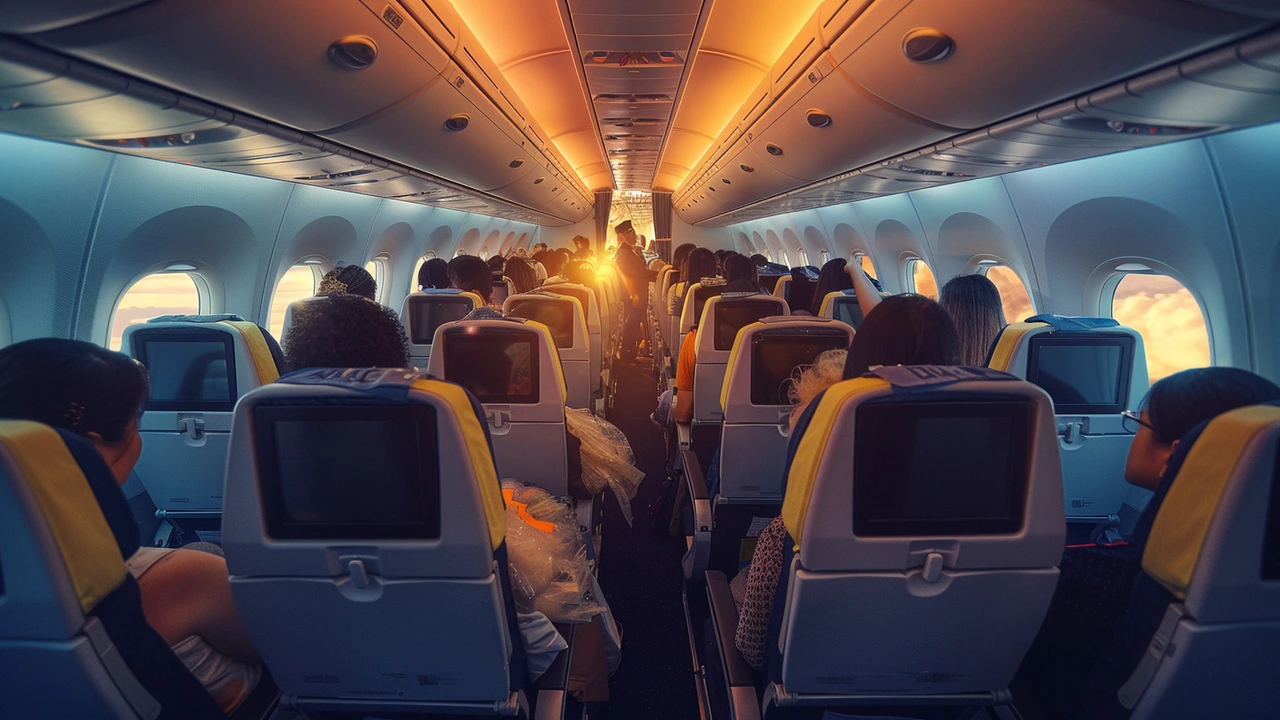
A Mid-Air Tragedy: Singapore Airlines Flight Hit by Severe Turbulence
A recent Singapore Airlines flight from London to Singapore became a horrifying ordeal for its passengers and crew when it encountered severe turbulence. The incident claimed the life of a 73-year-old British man and left 30 others injured, seven of them critically. The tragic event underscores the unpredictable nature of air travel and the increasing frequency of turbulence-related incidents attributed to climate change.
The ill-fated flight, a Boeing 777-300ER, departed from Heathrow Airport with 211 passengers and 18 crew members. The turbulence struck the aircraft at an altitude of 37,000 feet, approximately 10 hours into the flight. Passengers recounted the terrifying moments, describing sensations of sudden drops and unpredictable rises that jolted everyone on board. Such severe turbulence can transform a routine flight into a nightmare, especially for those unprepared for the sudden shifts in altitude and pressure.
Emergency Diversion to Bangkok
Due to the severity of the situation, the pilots made the critical decision to divert the aircraft to Bangkok's Suvarnabhumi International Airport. An emergency landing request was promptly made, and upon arrival, medical teams were ready to treat the wounded passengers. The quick response was crucial in providing immediate care to those most severely affected, including the unfortunate British man whose life was claimed, presumably due to a heart attack triggered by the turbulence.
Incidents like this highlight the importance of being mindful of safety protocols during flights. The seven critically injured passengers serve as a grim reminder that even in modern aviation, the unpredictability of nature can lead to life-threatening situations. While it is impossible to eliminate all risks associated with flying, adherence to safety guidelines such as keeping seat belts fastened can mitigate the severity of injuries during turbulence.
Airline’s Response and Ongoing Investigation
In the aftermath of the incident, Singapore Airlines has been working tirelessly with aviation authorities to investigate the cause and circumstances of the severe turbulence. The airline has expressed its deepest condolences to the family of the deceased and pledged to provide support to all affected passengers. Additionally, they are cooperating fully with regulatory bodies to ensure that such incidents are thoroughly examined to prevent future occurrences.
Singapore Airlines’ response has been focused on assisting those impacted both physically and emotionally. Counseling services and medical aid have been offered to passengers and crew, underscoring the airline's commitment to passenger welfare even amid such distressing events. This focus on comprehensive support aligns with industry best practices for handling in-flight emergencies and post-incident care.
The Role of Climate Change in Increasing Turbulence
Experts have pointed to the role of climate change in the increasing frequency and severity of turbulence. As global temperatures rise, atmospheric conditions become more unstable, leading to turbulent airflows. This trend is expected to continue, making turbulence a more common hazard for air travelers. Airlines and aviation authorities are aware of these challenges and are working to improve detection systems and pilot training to better manage turbulent conditions.
For passengers, the events on the Singapore Airlines flight highlight the importance of heeding safety advisories. Staying seated with seat belts fastened whenever possible can significantly reduce injury risks during unexpected turbulence. As climate change continues to impact global weather patterns, such precautions are becoming even more vital.
Conclusion
The tragic incident on Singapore Airlines' flight from London to Singapore is a stark reminder of the unpredictable risks associated with air travel. The loss of a 73-year-old British man and the injuries sustained by 30 others bring to light the critical importance of safety protocols. As investigations continue and the airline supports its passengers, the aviation industry must also address the broader implications of climate change on flight safety. Ensuring passenger well-being in increasingly turbulent skies is more important than ever, both for the airlines responsible and the travelers who depend on safe air travel.
man i just saw the video clip of the cabin going nuts... like, one second everyone's sipping coffee, next second it's like a washing machine on spin cycle. seatbelts are not optional, folks. i swear half the people on planes don't even know what 'fasten' means.
The turbulence was likely caused by a combination of jet stream anomalies and increased convective activity due to tropospheric warming, which has risen 0.4°C per decade since 1980 according to the 2021 Nature Climate Change study by Williams and Joshi. Seatbelt compliance is statistically correlated with reduced injury severity, but the real issue is that airlines still rely on outdated turbulence detection algorithms that don't integrate real-time satellite thermal data. The FAA's 2020 advisory circular on turbulence mitigation is outdated and lacks mandatory upgrades for commercial fleets.
this is all a cover-up. the plane didn't hit turbulence. it got hit by a secret military drone testing weather weapons. you think they'd let a 73-year-old die from 'bad air'? nah. they needed a test subject. look at the flight path - it passed right over a classified radar site in the Indian Ocean. the airline's 'apology'? distraction tactic. they're hiding the real cause. seatbelts won't save you from directed energy.
you know, when i was a kid, my grandpa used to say, 'the sky doesn't care if you're ready.' he flew in prop planes during the war, no seatbelts, just prayer and a wool hat. now we got fancy planes, screens, snacks, but we still can't outsmart the wind. maybe the real lesson isn't about belts or tech... it's about humility. we think we control everything, but the air? it's older than us. and it doesn't ask permission.
Turbulence? No. It's climate change. Climate change. Climate change. That's the only thing that matters. And yes, I'm tired of hearing it. But it's true. And you're ignoring it. And you're wrong.